
This mini unit plan is taken right from Ag in the classroom. Lesson plans and handouts are included. Topics discussed include, food waste, soil science, plant biology, and climate change.

This mini unit plan is taken right from Ag in the classroom. Lesson plans and handouts are included. Topics discussed include, food waste, soil science, plant biology, and climate change.
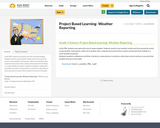
In this PBL students were given the role of meteorologists. Students need to track weather locally and from around the world, create weather instruments, collect local weather data using the instruments they created, and present their findings in a mock weather broadcast.
Students needed to collaborate and think critically to create devices, to decide on what data to track and how to present their weather forecast to the public
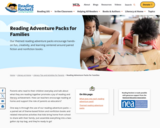
What goes into each reading adventure pack?
Parent information sheet with an introductory note that you can personalize, instructions about how to use the packet, and tips for sharing fiction and nonfiction books with children.
Two books: one fiction and one nonfiction, selected by Reading Rockets for high quality and wide availability in school libraries
Creativity Activity: a hands-on craft project
Imagination Activity: encourages imaginative play, writing, or drawing
Get Real Activity: focuses on real-world experiences for parent and child
Bookmark: lists the featured titles and alternative titles
The Reading Rockets reading adventure packs contain the instructions, activities, and bookmarks for you to download and print, for free.
K-3 all subjects!
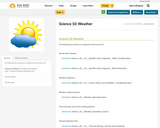
The following are resources or assignments for Science 10,
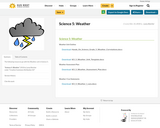
The following resources go with the Weather unit in Science 5.
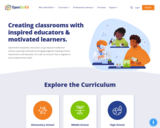
Open Educational Resources (OER) for K-12 Science including - lessons, videos, simulations, professional learning and on-demand teacher support.
*more is being developed so keep checking for new materials*
*CHECK GRADES OTHER THAN WHAT YOU TEACH TO FIND ADDITIONAL SK LESSON TOPICS*
"We’ve made our curriculum free for all educators because high quality instructional materials and professional learning can bridge the opportunity gap for all students. The units underwent a rigorous 18-month development process with teacher and student voices across the country informing the selection of the phenomena and each unit’s storyline. Using our curriculum, teachers have seen their students strengthen their ability to solve problems, become more curious about the world around them, and be excited to discover the wonders of science in their classrooms."

Every week Science North will provide Grade 2 teachers with a pre-recorded video and printable resource.
Teachers will be able to share these YouTube videos and resources with students every week.
Included are classroom videos, student handouts, and offline lesson plans.
These videos and handouts can be sent to students to provide them with key concepts and activities that link to the curriculum.
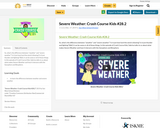
So, what's the difference between "weather" and "severe weather"? Is it just how hard the wind is blowing? Is it just thunder and lighting? Well, it can be some or all of those things. In this episode of Crash Course Kids, Sabrina talks to us about what makes Severe Weather and how it interacts with the Geosphere and Biosphere.

Students learn that wind and storms can form at the boundaries of interacting high and low pressure air masses. They learn the distinguishing features of the four main types of weather fronts (warm fronts, cold fronts, stationary fronts and occluded fronts) and how those fronts are depicted on a surface weather analysis, or weather map. Students also learn several different ways that engineers help with storm prediction, analysis and protection.
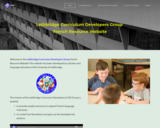
"The website includes clusters of task-based lessons and examples of tasks that fit within each of Willis’ (1996) six types of tasks. The LCD Group is also dedicated to promoting intercultural communicative competence (see Foundations section) in the second language classroom and has included a section of activity ideas and lesson plans to demonstrate how intercultural themes can be embedded in and complement second language instruction."

Students learn about tornadoes, the damage they cause, and how to rate tornadoes. Specifically, students investigate the Enhanced Fujita Damage Scale of tornado intensity, and use it to complete a mock engineering analysis of damage caused by a tornado. Additional consideration is given to tornado warning systems and how these systems can be improved to be safer. Lastly, students learn basic tornado safety procedures.

This game is suitable for play both within and outside of the classroom, and although designed for children ages 9-13, it offers a fun, learning opportunity for the entire family. In addition to being a game, it is an eye-catching poster showing continents, oceans and all of the major ocean currents. On the reverse, there are black and white educational activities designed to be reproduced directly from the poster for use in the classroom.

Property owners in New Jersey can check their vulnerability to sea level rise and storm surge using an interactive mapping toolthe NJ Flood Mapper. Here's how one restaurant owner used results from the tool in his long-term planning.

Questions about weather clear up when students use what they learned from their books to create a presentation to share with the rest of the class.

Students are introduced to the basics of the Earth's weather. Concepts include fundamental causes of common weather phenomena such as temperature changes, wind, clouds, rain and snow. The different factors that affect the weather and the instruments that measure weather data are also addressed.
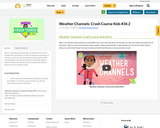
Why is my weather app sometimes wrong? Well it has a lot to do with wind. Jet Streams, air cells, the shape and movement of the Earth... there are a lot of things that make weather a little unpredictable. In this episode of Crash Course Kids, Sabrina talks to us about how Ocean Currents actually work with Jet Streams to move weather around.

Students begin this lesson by considering how weather forecasting plays an important part in their daily lives. They learn about the history of weather forecasting -- from old weather proverbs to modern forecasting equipment and how improvements in weather technology have saved lives by providing advance warning of natural disasters.
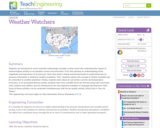
Students are introduced to some essential meteorology concepts so they more fully understand the impact of meteorological activity on air pollution control and prevention. First, they develop an understanding of the magnitude and importance of air pressure. Next, they build a simple aneroid barometer to understand how air pressure information is related to weather prediction. Then, students explore the concept of relative humidity and its connection to weather prediction. Finally, students learn about air convection currents and temperature inversions. In an associated literacy activity, students learn how scientific terms are formed using Latin and Greek roots, prefixes and suffixes, and are introduced to the role played by metaphor in language development. Note: Some of these activities can be conducted simultaneously with the air quality activity (What Color Is Your Air Today?) of Air Pollution unit, Lesson 1.

Students will observe and record weather conditions for one week.

From rainbows to tornadoes and winter storms to tsunamis, meteorologist Crystal Wicker breaks down the fascinating world of weather. Be sure to check out the section on experiments.